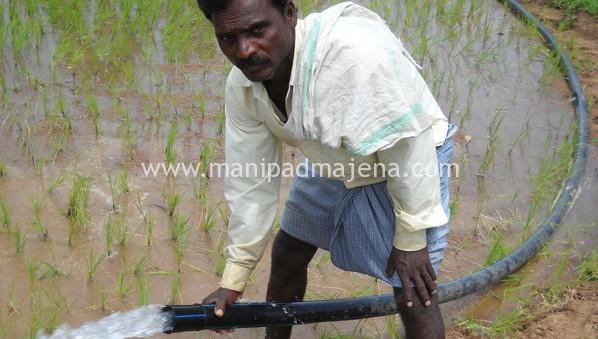
[NEW DELHI] India, Nepal, Bangladesh and Pakistan along with China account for nearly half of the world’s total groundwater use and these regions are expected to experience serious deficits, says the UN World Water Development Report (WWDR 2015), Water for a Sustainable World 2015 released ahead of World Water Day on 22 March.
WWDR 2015 explains the complex relationship between access to water and economic development using India as an example. Between 1960 and 2000 India’s mechanised tube wells increased from one million to 19 million.
India has 26 million groundwater structures; Bangladesh and Pakistan each have around 5 million.
Food grain yields have more than tripled since 1950 alleviating poverty, but 54 per cent of India’s landmass in 2015 faces high to extremely high water stress due to unregulated water withdrawal and intensified farming, according to the World Resources Institute.
By 2050, agriculture will need to produce 60 per cent more food globally and 100 per cent more in developing countries, including South Asia, the WWDR 2015 foresees. This will result in greater competition for water among agriculture, urban centres and industry.
Per capita water availability in South Asian countries has been falling between 1962—2012. In Bangladesh water availability dropped from 24,000 cubic metres of water per person per year in 1962 to 8,500 in 2012, according to FAO’s global water information system Aquastat. Similarly, Nepal’s water availability has declined from 21,500 to 6500 cubic metres per person per year.
One area of concern highlighted by WWDR 2015 highlights is providing water to world’s rising slum population, projected to touch 900 million people by 2020.
“In South Asia by 2012 the urban slum population was already a staggering 200 million — more than one-third of the 579 million total urban population,” Bharat Dahiya urban expert at the Social Research Institute of Chulalongkorn University in Bangkok, tells SciDev.Net.
“The region, on the one hand faces the enormous task of supplying safe drinking water (and sanitation) to this vast and growing urban slum population within increasing water resource constraints, and on the other, needs to continue capitalising on the economic growth led by its dynamic cities,” Dahiya adds.
WWDR 2015 says 748 million people worldwide are still without access to improved drinking water sources (protected from outside contamination), many of whom are in South Asia, even though access increased by 19 per cent over 1990-2012.
Tushaar Shah, international water expert and senior fellow with the International Water Management Institute, Colombo, says that in the coming years groundwater extraction for agriculture will continue to increase and the crisis will deepen in South Asia.
Global groundwater use is 900—950 billion cubic metres (bcm) of water per year with South Asia alone responsible for one-third or 300 bcm per year. India’s withdrawal of 240 bcm per year is much higher than China’s 130 bcm per year.
